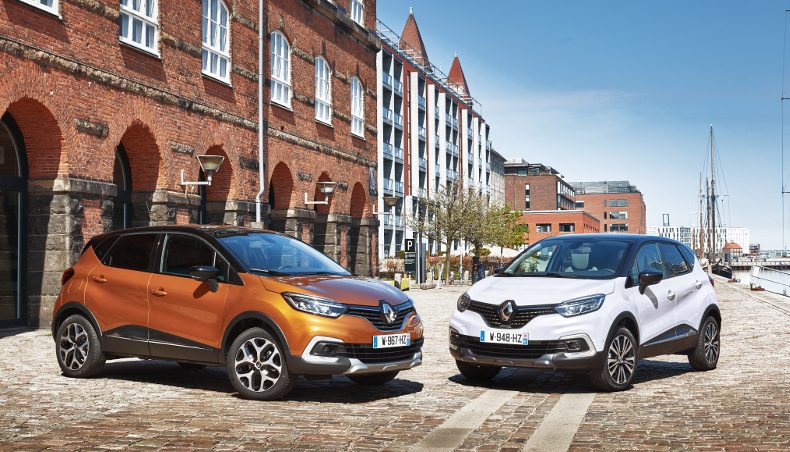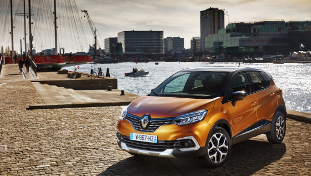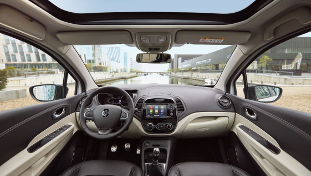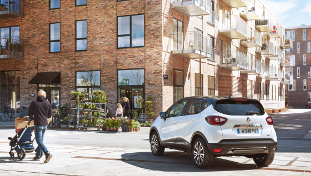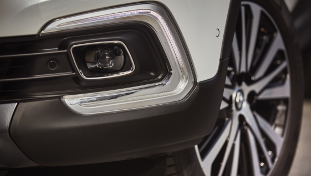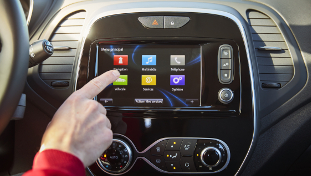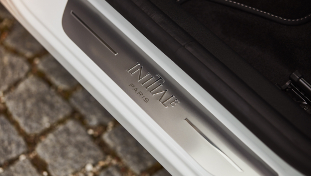Wider stance and ‘chequered flag’ fog lights identify the RS as top gun of the Megane range.
Two years after the launch of its fourth-generation Megane, Renault South Africa has introduced the big-muscle version - in fact, two of them.
In an unusual move the French car maker offers its hot hatchback in two flavours: the Lux automatic and the Cup manual. The two cars are identically priced, but the Cup is a racier version for enthusiasts, and along with requiring manual gear shifts it also has firmer suspension.
Both derivatives are fired along by a new 1.8l turbo petrol engine. It’s downsized from the previous 2.0l unit but power and torque have increased from 195kW and 360Nm to 205kW and 390Nm.
There is plenty of sporty show-and-tell to visually distinguish the RS duo from regular Meganes, the most obvious being the more aggressively-styled bumpers with fog lights that are inspired by a chequered flag. The wider stance (an extra 60mm at the front and 45mm at the rear) and bigger alloy wheels (standard 18-inch and optionally 19-inch) also imbue this racy Renault with more presence, as does our test vehicle’s "tonic orange", a new colour added to the palette of the Megane RS.
The sporty vibe continues in the cabin with its aluminium pedals, nappa-covered steering wheel, and body-hugging Alcantara sports seats. As befits its flagship status in the range, the spec sheet is fully-loaded and includes a heartbeat that plays through the speakers as a welcome when you get into the car.
Boy-racer décor: aluminium pedals and carbon fibre-look door lining.
A completely automatic key unlocks the car as you walk up to it, and locks it again when you walk away; no pressing of any buttons required. My problem with the high-tech key is its lack of a low-tech eyelet so that you can hang it on a key rack at home, which meant I was constantly misplacing it.
Along with governed top speeds of 250km/h, Renault quotes an identical 5.8 second 0-100km/h time for both Megane RS derivatives, a claim we’d be inclined to dispute given the propensity for modern automatics to outsprint their three-pedalled counterparts. Especially automatics with a launch control function, as found in this Megane RS Lux, where left-foot braking allows the driver to hike the engine revs before zooming off the line.
Apart from requiring manual gear shifts, the Cup version is designed for a more visceral experience with its 20% firmer suspension, and better traction under hard acceleration due to a front limited-slip differential.
That said, the Lux that I road tested is hardly “soft” and still occupies the wilder side of the hot-hatch kingdom, compared to the more approachable and civilised VW Golf GTI.
Its ride is still pretty firm, especially on bumps and ripples, and the RS Lux isn’t a car that doubles as a comfy commuter for school runs. Gearshift paddles allow the driver to be more involved, but unfortunately not while turning as they’re fixed in place on the steering column rather than on the wheel itself.
The Multi-Sense feature offers various drive modes that affect throttle, steering and gear shift responses, but even in the mildest of these settings it’s not a car that’s content to be ushered through slow-moving traffic. It always has the demeanour of an excited Jack Russell straining at the leash to run after a ball, and when you’re behind the wheel of this car the rest of the world seems to move in slow motion.
The sportier modes really bring out this Megane’s feral side with a quicker throttle and heavier steering, accompanied by loud crackles and burps from the exhaust that add vocal sizzle to the experience. In Race mode the stability control is also disabled, leaving traction duties solely in the hands of the (preferably experienced) driver.
Whereas all-wheel drive is becoming de rigueur in this league, the Megane RS still has its power fed through the front wheels and becomes a bit of a handful when driven enthusiastically. There is some wheel spin and torque steer under hard acceleration which some drivers might find disconcerting and others alluringly playful - horses for courses.
Keep a firm hand on the tiller and Renault’s racy hatch gets through corners with a firm and planted feel though. The 4Control rear-wheel steering gives it a nimble turn-in that nicely resists understeer.
I like the fact that the Megane RS doesn’t try to clone its rivals but forges its own niche in the hot hatch segment. In overall character it sits between the “softer” Golf GTI and the wilder Civic Type R. With its very firm ride and tendency to torque steer the Megane is very well priced in the hot hatch league, being notably more powerful than the similarly priced GTI but power-wise venturing right into the territory of the much more expensive Golf R.
If you’re in the market for a racer for the people - get your hands on the Renault Megane or Megane RS at a Group 1 Renault dealership today!
